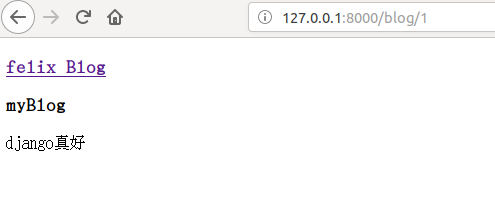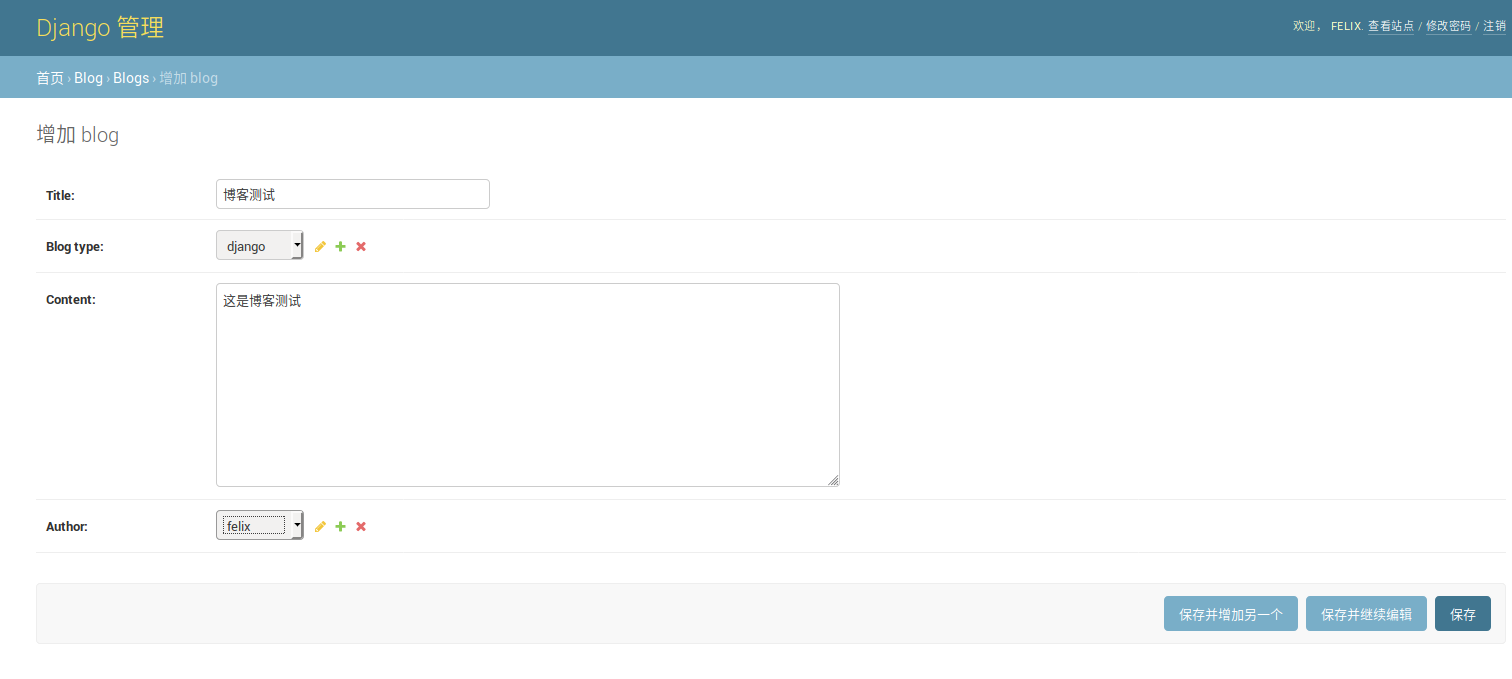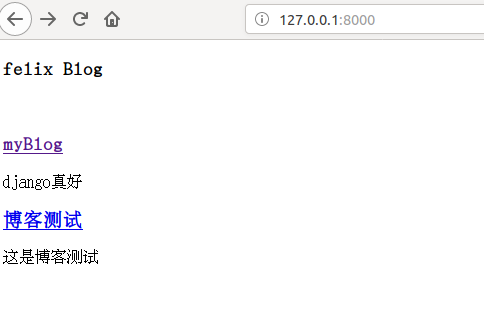上一篇我们创建了博客表和标签表以及超级用户,那如何将创建的博客通过网页显示出来呢?‘我们简单的创建首页和详情页。
1、新建html界面
首先创建在blog app下创建一个templates文件夹,这个文件夹用来放置前端页面,注意文件夹名字必须是templates。
创建blog_list.html 文件用来放博客列表。创建blog_detail.html文件用来放博客详情。

<!DOCTYPE html> <html lang="en"> <head> <meta charset="UTF-8"> <title>felix Blog</title> </head> <body> <div> <h3>felix Blog</h3> </div> <br/> </body> </html>

<!DOCTYPE html> <html lang="en"> <head> <meta charset="UTF-8"> <title>博客详情</title> </head> <body> </body> </html>
2、创建是视图函数
打开blog下的views.py

from django.shortcuts import render_to_response, get_object_or_404 from .models import Blog # Create your views here. # 博客列表 def blog_list(requests): context = { 'blogs': Blog.objects.all() } return render_to_response('blog_list.html', context) # 博客详情 def blog_detail(requests, blog_pk): context = { 'blog': get_object_or_404(Blog, pk=blog_pk) } return render_to_response('blog_detail.html', context)
这里视图函数中传递了参数给前端,所以得修改一下之前写的前端代码,渲染视图函数传递过来的数据。

<!DOCTYPE html> <html lang="en"> <head> <meta charset="UTF-8"> <title>felix Blog</title> </head> <body> <div> <h3>felix Blog</h3> </div> <br/> {% for blog in blogs %} <a href="{% url 'blog_detail' blog.pk %}"><h3>{{ blog.title }}</h3></a> <p>{{ blog.content }}</p> {% endfor %} </body> </html>

<!DOCTYPE html> <html lang="en"> <head> <meta charset="UTF-8"> <title>{{ blog.title }}</title> </head> <body> <a href="{% url 'home' %}"> <div> <h3>felix Blog</h3> </div> </a> <h3>{{ blog.title }}</h3> <p>{{ blog.content }}</p> </body> </html>
3、创建url访问路径
修改全局的myblog下的urls.py

"""myblog URL Configuration The `urlpatterns` list routes URLs to views. For more information please see: https://docs.djangoproject.com/en/2.1/topics/http/urls/ Examples: Function views 1. Add an import: from my_app import views 2. Add a URL to urlpatterns: path('', views.home, name='home') Class-based views 1. Add an import: from other_app.views import Home 2. Add a URL to urlpatterns: path('', Home.as_view(), name='home') Including another URLconf 1. Import the include() function: from django.urls import include, path 2. Add a URL to urlpatterns: path('blog/', include('blog.urls')) """ from django.contrib import admin from django.urls import path, include from blog.views import blog_list urlpatterns = [ path('', blog_list, name='home'), # 主页路径 path('admin/', admin.site.urls), path('blog/', include('blog.urls')), # 博客app路径 ]
在blog app下创建url路径,新建urls.py

from django.urls import path from . import views urlpatterns = [ path('<int:blog_pk>',views.blog_detail,name='blog_detail') ]
4、启动服务,运行测试
此时我们在浏览器输入:http://127.0.0.1:8000/

点击myBlog,跳转到详情:

如果没有数据的话,我们可以进入admin后台管理系统创建。

然后刷新首页:

就出现了刚才创建的博客!
